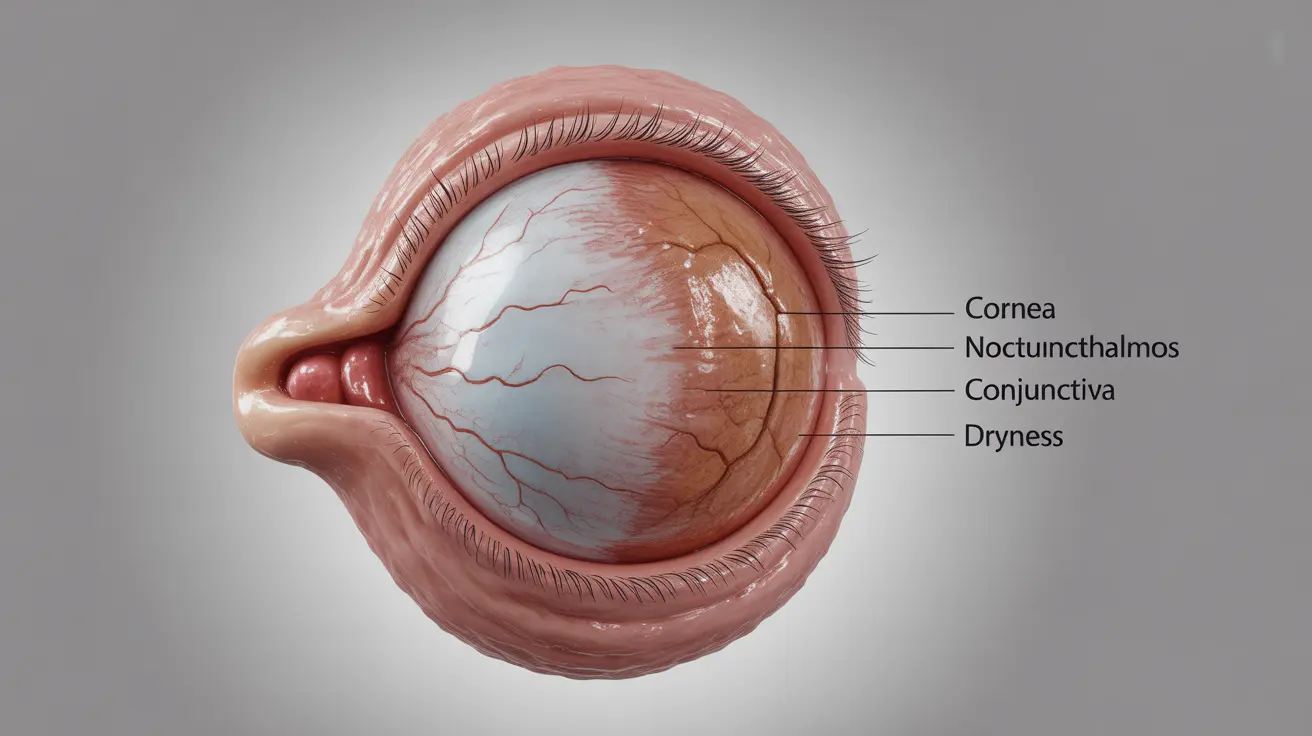Sleeping with one eye open, medically known as nocturnal lagophthalmos, is a condition that affects many individuals, often without their awareness. This unique sleep phenomenon can impact eye health and overall well-being, making it essential to understand its causes, effects, and treatment options.
While it might sound like something from a suspense movie, this real medical condition requires attention and proper management to prevent potential complications. Let's explore the comprehensive details of this intriguing sleep disorder and learn how to address it effectively.
Understanding Nocturnal Lagophthalmos
Nocturnal lagophthalmos occurs when people cannot fully close their eyes during sleep. This condition can affect one or both eyes and varies in severity from slight opening to significant exposure of the eye surface. While some people may be aware of their condition through symptoms, others might only discover it when a sleep partner notices their partially open eyes.
Signs and Symptoms
People who sleep with one eye open often experience several distinctive symptoms that can affect their daily life and eye health:
- Dry, irritated eyes upon waking
- Morning eye pain or discomfort
- Blurred vision, especially in the morning
- Excessive tearing
- Redness in the eyes
- Sensitivity to light
- Foreign body sensation
Common Causes of Sleeping with Eyes Open
Several factors can contribute to nocturnal lagophthalmos:
Anatomical Factors
- Facial nerve paralysis
- Natural eye anatomy
- Previous eye or facial surgery
- Thyroid eye disease
Medical Conditions
- Bell's palsy
- Stroke
- Trauma to the facial nerves
- Autoimmune conditions
Health Implications and Risks
When left untreated, sleeping with one eye open can lead to various complications:
- Chronic dry eye syndrome
- Corneal damage
- Increased risk of eye infections
- Vision problems
- Chronic eye inflammation
Treatment Options and Management
Medical Interventions
Healthcare providers may recommend various treatments depending on the underlying cause:
- Artificial tears or lubricating eye ointments
- Moisture chamber goggles
- External eyelid weights
- Surgical procedures in severe cases
Self-Care Measures
Several home-based strategies can help manage symptoms:
- Using a humidifier in the bedroom
- Applying warm compresses before bed
- Practicing proper eye hygiene
- Using specialized eye masks
- Ensuring proper sleep position
Preventive Measures and Lifestyle Changes
Implementing certain lifestyle modifications can help reduce symptoms and protect eye health:
- Maintaining proper sleep hygiene
- Keeping the bedroom environment appropriately humid
- Regular eye check-ups
- Avoiding irritants and allergens
- Staying well-hydrated
Frequently Asked Questions
What are the common symptoms and signs of sleeping with one eye open (nocturnal lagophthalmos)?
Common symptoms include morning eye dryness, irritation, blurred vision, excessive tearing, and a feeling of grittiness in the eyes. Some people may also experience eye pain, redness, and increased sensitivity to light upon waking.
What causes nocturnal lagophthalmos and why do some people sleep with their eyes partially open?
The condition can be caused by various factors, including facial nerve paralysis, anatomical variations, medical conditions like Bell's palsy, previous surgeries, or trauma to the facial nerves. Some people may have a natural predisposition to incomplete eye closure during sleep.
How can sleeping with one eye open affect eye health and vision over time?
Long-term effects can include chronic dry eye syndrome, corneal damage, increased risk of eye infections, and potential vision problems. The constant exposure of the eye surface during sleep can lead to serious complications if left untreated.
What are the best treatments and management options for nocturnal lagophthalmos to prevent dry eye and irritation?
Treatment options include using artificial tears, moisture chamber goggles, external eyelid weights, and in some cases, surgical intervention. The specific treatment plan depends on the underlying cause and severity of the condition.
Are there lifestyle changes or home remedies that can help reduce symptoms of sleeping with one eye open?
Yes, helpful lifestyle changes include using a humidifier, applying warm compresses, wearing specialized eye masks, maintaining proper sleep hygiene, and staying hydrated. Regular eye check-ups and avoiding eye irritants are also important preventive measures.




